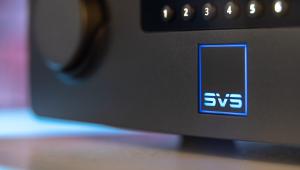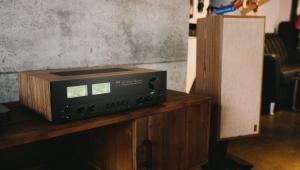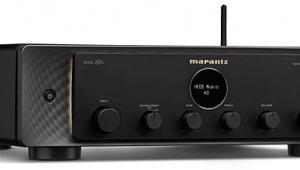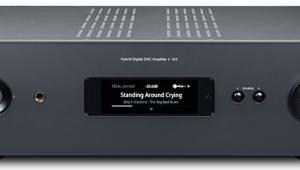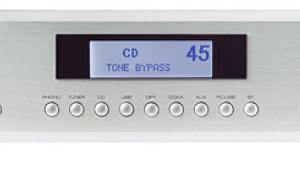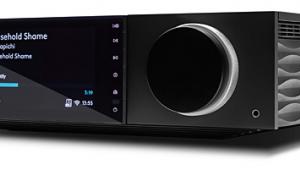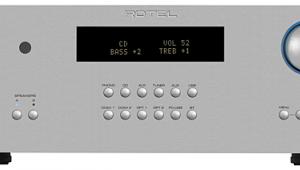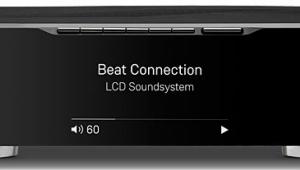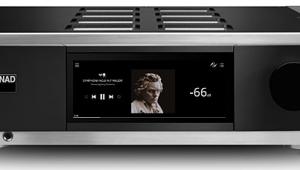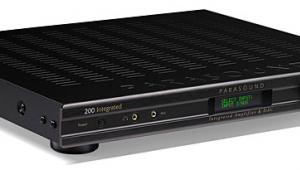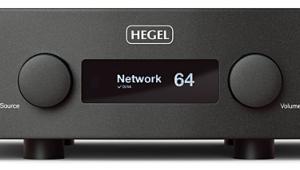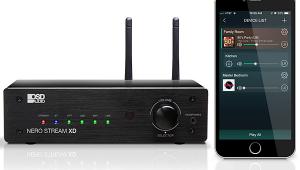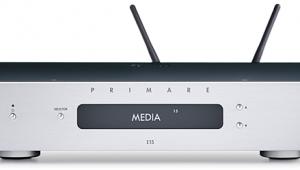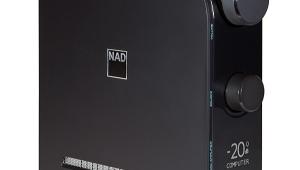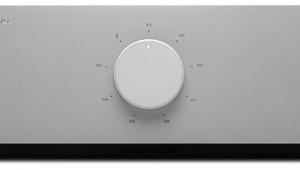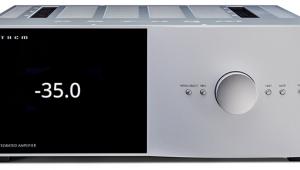No Streaming and from my experience USB is very noisy..
This would have been cutting edge 2 years ago..
Rotel A12 Integrated Amplifier Review

AT A GLANCE
Plus
USB inputs for PC and iOS
Premium Wolfson DAC
Bluetooth aptX
Minus
No DSD decoding
No Wi-Fi, AirPlay, or
Ethernet
No streaming services
THE VERDICT
The Rotel A12 accepts direct wired input from PCs and iOS devices and gets the best out of both digital and analog sources with its great-sounding DAC and amp.
Connecting a computer to an audio system with a USB cable seems a perfectly logical idea. It’s simple, it’s direct, and it enables the computer to feed bits to the system and rely on the system’s digital-to-analog conversion. Yet this desirable feature is tantalizingly rare. AVRs and streaming amps tend to rely on wired and wireless network connections rather than on a USB port and asynchronous digital-to-analog converter (DAC) that can take over the clocking functions of the digital bit transfer and reduce the effects of jitter. The Rotel A12 stereo integrated amplifier doesn’t have network audio features—but it does have the desired PC-friendly USB input, along with an iOS-friendly USB input, a moving-magnet phono input, and the usual complement of digital and analog inputs. It’s the amp for those who connect every conceivable signal source with cables but reserve the right to hedge their bets—in this case, with Bluetooth aptX that offers the convenience of pushing music to the system wirelessly from a compatible device.
A Foot in Each Camp
Rotel operates in both the two-channel and multichannel worlds. The company offers an assortment that includes integrated amps, a preamp, power amp, DAC, and CD player (remember CD players?); for home theater, there’s a Class D AVR, a pre/pro, a fivechannel amp, and wholehouse distribution amps.
The A12 is one of two new stereo integrated amps. It has rated power of 60 watts per channel operating in Class AB. It uses the same 192-kilohertz/24-bit Wolfson WM8740SEDS DAC used in the RDD-1580, Rotel’s standalone component DAC. (Though the 1580 uses two DAC chips for even higher performance.) The step-up A14 integrated amp ($1,299) is rated at 80 watts per channel and has a 768-kHz/32-bit DAC from AKM that supports DSD. Most download services offer PCM formats at 192/24 or less, so the main practical impacts of the step-up model are DSD and more power.

Rotel’s front-panel aesthetic prizes simplicity and calm. On either side are a small volume knob at right and a hard on/off power button at left (standby mode requires the remote control). Near the center is a blackon-white fluorescent display (I’d have preferred white-on-black). Each input gets a button along a horizontal row. There are also three menu navigation buttons: menu, minus, and plus. They access bass, treble, tone bypass, display dimming, LED dimming, power on max volume, USB power (allowing the rear USB jack to provide power to a Google Chromecast audio dongle, Rotel says), auto-off inactivity timer, signal-sensing for automatic power on/off, fixed gain for each input, USB Class 1 or 2 for the PC input (Class 2 requires driver installation on Window/Linux PCs but is standard on Macs), general software version, PC-USB software version, and factory default. The full-sized remote has the expected input and disc navigation keys, adding further direct access to the tone and dimming controls.
If you’re considering the A12 as an AVR replacement, be warned that it has no HDMI jacks. You’d connect a universal disc player with the digital coaxial, optical, or analog inputs. The non-USB digital-ins operate up to 192/24. Your phone or tablet could communicate via Bluetooth, with high-quality aptX signal compression if your device supports it—but for serious listening, you’d be using one of the USB or other inputs. AVR staples such as DLNA, Wi-Fi, AirPlay, streaming services, AM, and FM are absent, though the unit does have RS-232, 12-volt trigger, a third USB jack (alluded to earlier) strictly for powering a Chromecast or other audio streaming device, and remote jacks for both Rotel Link and nonRotel remotes.
Associated equipment included a pair of Paradigm Reference Studio 20 v.4 speakers, Paradigm Seismic 110 subwoofer (connected to the amp’s full-range stereo pre-outs), Oppo BDP-83SE universal disc player, Micro Seiki BL-51 turntable, Shure M97xE cartridge, Denon PRA-S10 stereo preamp serving as phono preamp, and Lenovo Windows 10 (formerly 7) laptop.
Analog
I’ve always loved the sound of Rotel’s amps, having used a Rotel AVR for eight years prior to them moving to Class D amplification and away from Class AB. I was enamored by its vast, open, and involving midrange and the measured yet not unduly polite top end. So call me biased. But listening to the
- Log in or register to post comments


